What is needed for an Independent Industry on Mars?

“Even if the spaceships from Earth permanently stop coming, the colony doesn’t eventually die out—which requires a huge industrial base, and a much harder industrial base to create than being on Earth.” -Elon Musk
Being alone on an island is different than hunched together with a million people on a far away rock. It is possible to do, but there is not much time for leisure. Martians might have to become the hardest and smartest working people in the solar system, if they want to survive and finally strive on the red planet.
Steel
While there is a lot that can be transported to Mars, most of the machines have to be produced there. So much on earth is taken for granted and most of it is the abundance of metal around us, first of it steel.
Example
Just a shelter for 4 people with the dimensions of 2 shipping crates, with around a height of 2.9 m, width of 5 m and length of 12 m would need in its simplest design, without structural supports, 218.6 m² of sheet metal. This includes the floor and excludes windows.

A habitat of the Mars Society in Utah.
With a thickness of 5 mm this would need 1.1 m³ of steel, which would be around 8.8 tons. This would mean for the whole population of 1 million people an amount of 2.2 million tons of steel. Just for shelters. The design of these shelters could be optimized a lot. This example should show that there needs to be a possibility to produce shelters on Mars, rather than ordering everything from earth, if some kids want to move out.
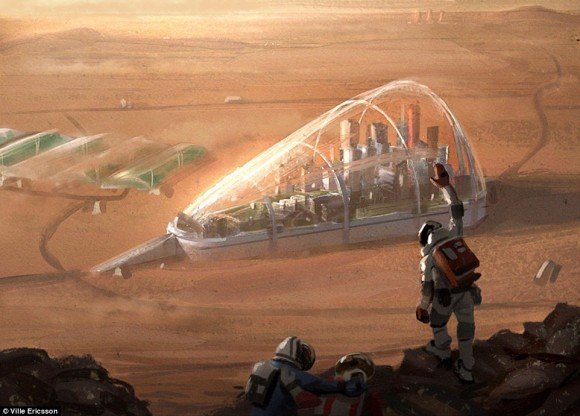
While these are still shacks, imagine what is needed for a city.
Sheet metal is used for a lot of other purposes too: Tools, factories, machine housings, car frames, furniture and a lot more.
Where does sheet metal come from?
The metal itself comes from the steel mill, where ore is processed to the end product of sheet metal and others. By looking not too far into the production process, the next problem is visible:
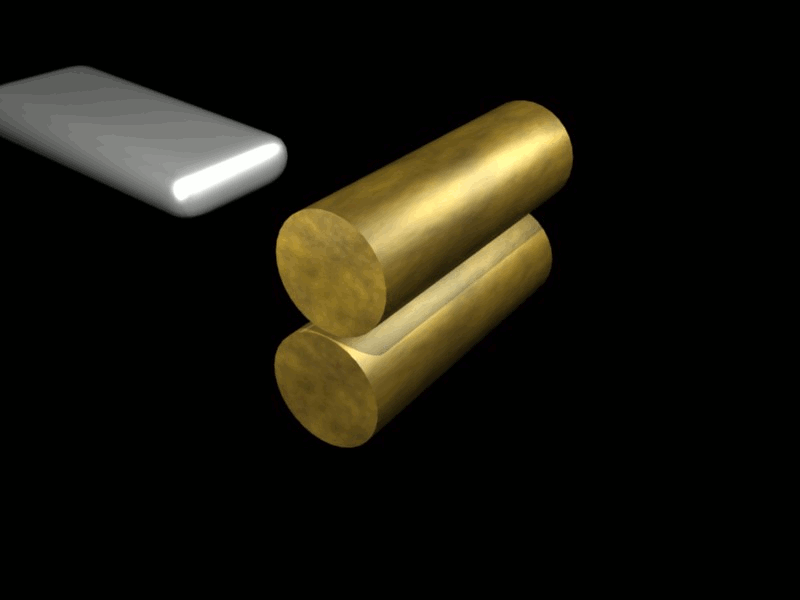
To form a metal sheet out of a steel slab, it needs to be rolled
This is done with a roll mills:
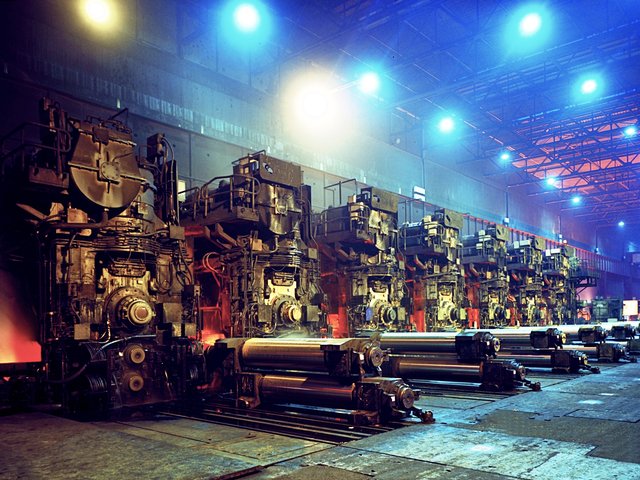
Try to fit these into spaceships
In the roll mills, the glowing metal block is flattened a little bit with each pass, until the desired strength is reached.
While the above configuration is a highly efficient and build to work fast and accurate, you could also work with just one roll mill and readjust it to the next thickness while running the metal block back and forth in the same machine.
So what is needed for a roll mill?
The main parts of it are an
- engine
- the rolls itself
- bearings and a frame to support them
- control for the engine.
While it will take some time to develop an industry capable of producing engines and bearings, the rest could be made on Mars.
But maybe there is also a lot smarter way to solve the shelter problem for the beginning. The goal of this thought experiment is to show that machinery for simple products can be very complex and also very heavy.
Similar roll mills are used to make tinfoil for wrapping up sandwiches.
In comes 3D printing
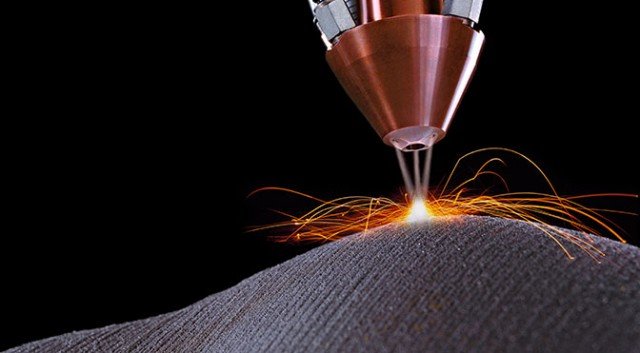
A laser printer from trumpf.
Finally it is time to shine for 3D printing. After years of printing pen holders and door stoppers, this technology could build the foundation for an industry on Mars.
3D printers for metal in varying sizes can be transported compact and produce items with high complexity. A lot of hand tools and machine parts can be printed. These can then build the foundation for more complex machinery.
While the first thought goes out to 3D printers using metal. Their smaller cousins can be extremely useful too:
With a method called lost foam casting, it is possible to cast complex forms, that where build out of foam. The molten steel replaces the foam in the mould. This method is used for the new approach of lost PLA casting or other special resins.
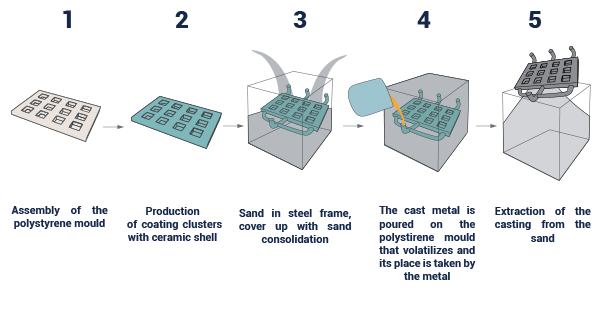
Casting in 5 steps.
Gathering ore, smelting it and casting it into form needs comparable few tools. But for a sustainable operation, a local source of printable material might be needed.
Prospecting and mining
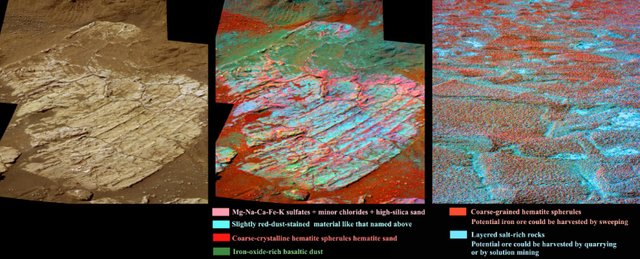
Mars has a lot of resources, and thanks to the scarce vegetation and soil movement, it should be easier to get to in comparison to Earth. Additionally the machinery that does the work on Earth doesn't exist on Mars, and may have to be build there. Current mining equipment is very heavy to stand the rugged environment and weights a lot. A design for weight optimized mining equipment might be needed.
While there have to be solutions for transporting ore, the other aspects of ressource gathering leave a lot of questions:
- Can explosives be used?
- How well can you use explosives?
- Do you have to import explosives or can you use local resources to produce them?
- how does the atmosphere and low gravity effect mining?

Big machines from MEC International.
And then there is the processing itself:
- Can a steel mill be build with local resources?
- If not, which parts have to be send there?
- How do the conditions effect the steel quality?
- Which energy source is available for smelting?
Each question opens up further questions.
Conclusions
For an engineer, the prospect of building an industry from scratch is an exciting thought. The next years to come will give some time to develop more optimized equipment to prepare for the future settlers.
On Mars, a lot of machines and processing of rough materials are needed. Even the smartest app can't help you if you need to get another square meter of sheet metal to make your shelter air tight. All the electricity on Mars will need lots of copper for cables and generators. It is too much to import, so a local way to produce copper wires has to be build.
With all the startups in software and electronics, it gives a new opportunity for mechanical engineering to step into the light and build a foundation for further technical advancement to flourish.
Thank you for reading!
If you feel it is your mission to solve some of this technical problems, you might find my engineering construction series useful. In it I explain the basic how you get from a product idea to the engineering drawings.
Do you have citations for your images? or are they all creative commons licensed?
Mostly I write under them where I got them from instead of citations.
A few are from wikipedia or NASA, that are creative common licensed.
It's easier to source them for others if you have links or something to the images. After all use of unlicensed images can end up getting steemit in trouble (lawsuit wise) and that would be bad for all of us. Not that I would expect anything to happen but safe practices are generally better and alleviate any concerns. Cheers!
I always provide links to all source material for any images I include in my own posts, so I know what a pain it is first hand...
That is great advice! Thank you very much!
I will see that I practice propper sourcing in further articles.
Probably better to get used to it anyway.
Awesome, thanks for understanding! You rock!
All we need are some nanobots to go up there and build it all for us... Easy!
Great article, your knowledge of the subject certainly shows.
Thanks! I appriciate the praise!
Maybe we get some nanobots for that in the next few year. That would really make it easier.
Great information and blog! -upvoted
People will have to use other planets, as Earth recourses will end up one day...